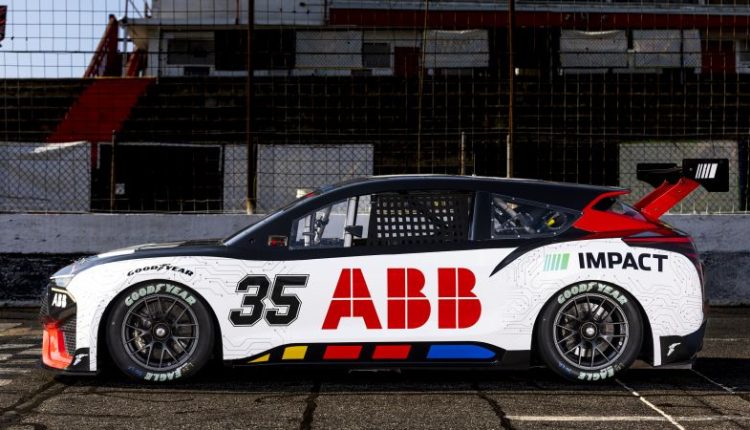NASCAR racing is all about loud, fast cars burning gas and rubber around a track. But on Saturday, NASCAR unveiled something different: an all-electric SUV that has twice as much horsepower as any of their current gas guzzlers.
It’s a sign of just how far electric vehicles have come that even a sport better known for its adherence to tradition is entertaining embracing the technology – even if, for now, the new car is just a prototype.
In some ways, it looks like what you’d expect from NASCAR. It’s colorful with big wheels and a wing on the back to help the vehicle hold the road at high speeds.
But, if NASCAR is known for anything, it’s the loud V8 internal combustion engines that power the race car. NASCAR executives insist they have no plans to turn away from fuel-burning power any time soon.
“The combustion engine is our core product, and that will remain so for the coming future,” said Riley Nelson, NASCAR’s head of sustainability.
But this vehicle, a fully drivable prototype, provides a way for NASCAR to gauge fan interest in electric cars.
The racing crossover has three electric motors — one driving the front wheels and two the back — capable of producing a maximum of 1,300 horsepower, almost double the horsepower of NASCAR’s current gasoline-powered race cars.
Some passionate NASCAR fans will, no doubt, reject the very idea of electric racing, said John Probst, NASCAR’s senior vice president of racing development. That’s why NASCAR wants to make it very clear that gasoline-burning race cars are in no immediate danger of extinction.
This is also an opportunity to open minds to what could be something exciting in the future. NASCAR’s own research with fans indicated that many are curious to know more about electric vehicles and could see EV racing as a way to learn about them, he said. Once fans see the speed and excitement of an electric cars, which can be more powerful and faster than gas cars, he thinks even the most anti-EV fans will drop some of their objections.
The NASCAR EV prototype was built in cooperation with ABB, a company that’s involved in building electric vehicle infrastructure, such as power equipment for chargers. ABB is also heavily involved in Formula E, the electric racing series affiliated with Formula 1.
Involvement in racing like this hopefully generates interest in EVs and shows what they’re capable of, said Michael Plaster, ABB’s executive vice president for electrification in the US. The hope is that exciting track performance can sell electric cars.
NASCAR introduced a broader initiative last year to reduce its overall net carbon emissions to zero by 2035. Racing itself represents only a small part of the organization’s overall carbon emissions, said Nelson. For now, most of that initiative has to do with reducing emissions from office space, transportation and operations at the 15 NASCAR-owned tracks.
“The pilot programs that we’ve implemented within operations of our core business, and then also the events, has been going really well,” she said, “and we know where we need to go but we’re still in the early stages of this journey.”
Currently, NASCAR cars run on fuel that is 85% gasoline and 15% ethanol but, in the next few years, NASCAR plans to announce a more sustainable racing fuel that can still be burned in loud V8 engines.
The original idea behind NASCAR, the National Association for Stock Car Auto Racing, was that it was supposed to involve cars similar to what Americans drive on the road. With many changes over the years, modern NASCAR race cars bear little resemblance to the Toyotas and Chevrolets that typical Americans own. This time, designers wanted to maintain that resemblance between the race car and the vehicles fans drive, which are, increasingly, SUVs. Today, traditional cars — as opposed to SUVs, trucks or vans — make up less than 20% of US auto sales, according to Cox Automotive.
“We actually have the opportunity to evaluate not just the battery electric part, but then also the crossover vehicle part,” said Probst. “So, it may be that one or both of these will become something in the future for us.”
Read the full article here

